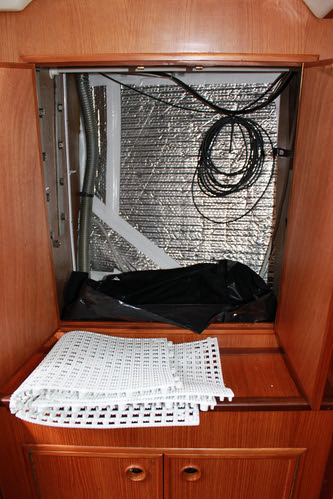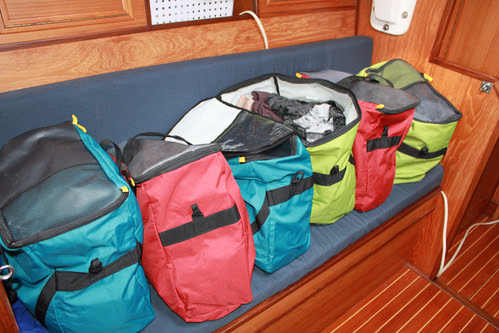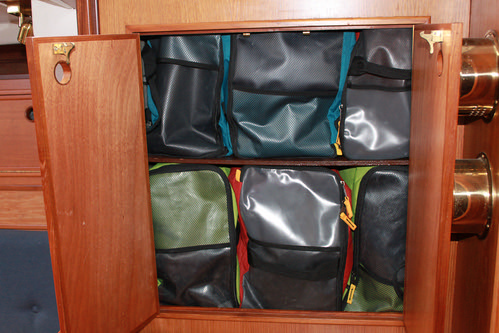Project from s/v Eolian, April, 2010.
Every now and then, life presents you with an opportunity disguised as a problem. The best of these opportunities give you the chance to experiment, with essentially no cost for failure. This is one of them.
When we purchased
Eolian, the four opening ports in the aft end had been replaced with Beckson
"Rain Drain" ports. They looked pretty good, and far, far better than the original 20-year old ports still in the forward half of the boat (I replaced those in the first 6 months of ownership, also with Rain Drains). But they were showing some age.
And now after an additional 12 years, the molded Lexan opening parts had aged in the sun, as Lexan is wont to do: they had turned cloudy and were taking on a yellowish-brownish tint. In fact, from the inside all four looked like they had been purposely frosted for privacy, except for that yellowish/brownish tint... that part was just plain ugly.
Using a piece of logic that I seem to frequently employ, I decided that they were so bad that replacement was in order. Therefore I had nothing to lose by having a go at polishing them myself - a zero cost experiment! I love those!
Being male, my first idea
always involves power tools. So I pulled off one of the Lexan molded windows and took it to my shop, where I applied it to a buffing wheel loaded with rouge. The results were mixed. The buffing wheel put too much energy into too small an area, causing local heating, which caused local surface crazing, if I was not very,
very careful. Because of this it was difficult to get an even polish on the surface.

OK, so I was
forced to fall back to manual methods. Next, I tried using Meguiar's products - these are specifically designed for polishing plastics. I had read that Lexan was not amenable to hand polishing, but once again, I had nothing to lose. So I started with the #17 cleaning compound (this is actually a polishing compound, containing a
very fine abrasive) and a soft rag.

The effect was nothing short of
stunning. In less than a minute of polishing, all the discoloration and almost all of the frosting was gone! Then I applied the polish (which is an abrasive-free wax), and it got even better! The aft head port in this picture is closed - you are here looking thru what used to look like a frosted privacy window!
I spent perhaps an hour total, and totally changed the appearance of the aft cabin and head.
I must confess that not all my "zero cost experiments" turn out well, but this one succeeded beyond my wildest expectations. If you don't have these two Meguiar's products, you should. Go out and get some. I can't recommend them enough!
 It really was a small project - it only required fabricating 4 tiny pieces of teak. But first, where to store the table? After some study, under the companionway stairs seemed to be the best location. There was room there; it was convenient to the cockpit; and it was currently unused space.
It really was a small project - it only required fabricating 4 tiny pieces of teak. But first, where to store the table? After some study, under the companionway stairs seemed to be the best location. There was room there; it was convenient to the cockpit; and it was currently unused space. The table top is supported vertically against the bulkhead.
The table top is supported vertically against the bulkhead. It sits on two small teak cleats, about 1½" x 3", routed out to accept the fiddle on the edge of the table top. The teak is varnished of course, and small pieces of non-skid foam serve as cushions.
It sits on two small teak cleats, about 1½" x 3", routed out to accept the fiddle on the edge of the table top. The teak is varnished of course, and small pieces of non-skid foam serve as cushions. The table is retained in position by an L-shaped upper cleat. One leg of the L holds it away from the bulkhead, and the other serves to keep it from jumping upwards in a seaway. A swinging toggle keeps it in place.
The table is retained in position by an L-shaped upper cleat. One leg of the L holds it away from the bulkhead, and the other serves to keep it from jumping upwards in a seaway. A swinging toggle keeps it in place.



























